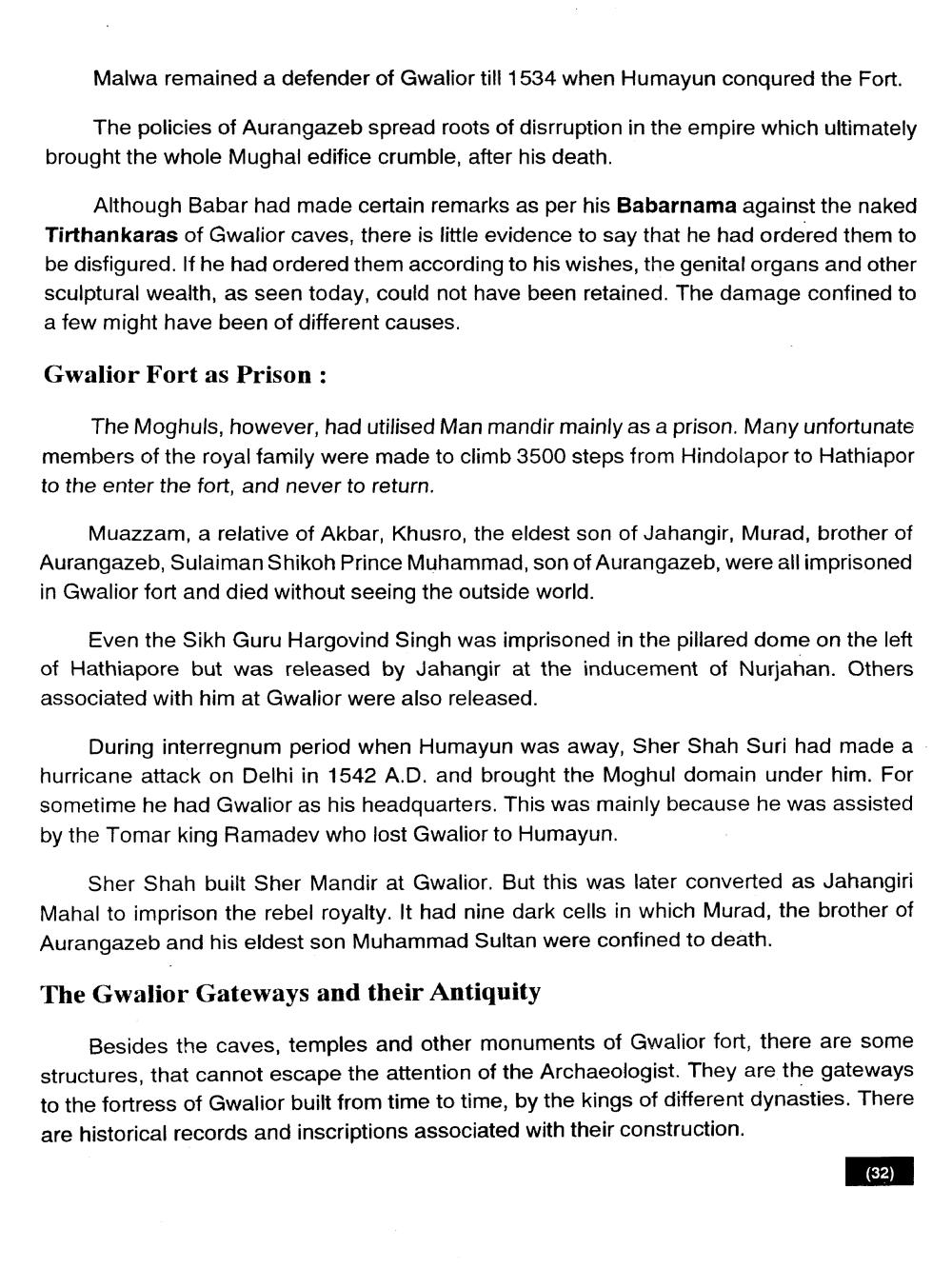________________
Malwa remained a defender of Gwalior till 1534 when Humayun congured the Fort.
The policies of Aurangazeb spread roots of disrruption in the empire which ultimately brought the whole Mughal edifice crumble, after his death.
Although Babar had made certain remarks as per his Babarnama against the naked Tirthankaras of Gwalior caves, there is little evidence to say that he had ordered them to be disfigured. If he had ordered them according to his wishes, the genital organs and other sculptural wealth, as seen today, could not have been retained. The damage confined to a few might have been of different causes.
Gwalior Fort as Prison :
The Moghuls, however, had utilised Man mandir mainly as a prison. Many unfortunate members of the royal family were made to climb 3500 steps from Hindolapor to Hathiapor to the enter the fort, and never to return.
Muazzam, a relative of Akbar, Khusro, the eldest son of Jahangir, Murad, brother of Aurangazeb, Sulaiman Shikoh Prince Muhammad, son of Aurangazeb, were all imprisoned in Gwalior fort and died without seeing the outside world.
Even the Sikh Guru Hargovind Singh was imprisoned in the pillared dome on the left of Hathiapore but was released by Jahangir at the inducement of Nurjahan. Others associated with him at Gwalior were also released.
During interregnum period when Humayun was away, Sher Shah Suri had made a hurricane attack on Delhi in 1542 A.D. and brought the Moghul domain under him. For sometime he had Gwalior as his headquarters. This was mainly because he was assisted by the Tomar king Ramadev who lost Gwalior to Humayun.
Sher Shah built Sher Mandir at Gwalior. But this was later converted as Jahangiri Mahal to imprison the rebel royalty. It had nine dark cells in which Murad, the brother of Aurangazeb and his eldest son Muhammad Sultan were confined to death.
The Gwalior Gateways and their Antiquity
Besides the caves, temples and other monuments of Gwalior fort, there are some structures, that cannot escape the attention of the Archaeologist. They are the gateways to the fortress of Gwalior built from time to time, by the kings of different dynasties. There are historical records and inscriptions associated with their construction.
(32)




